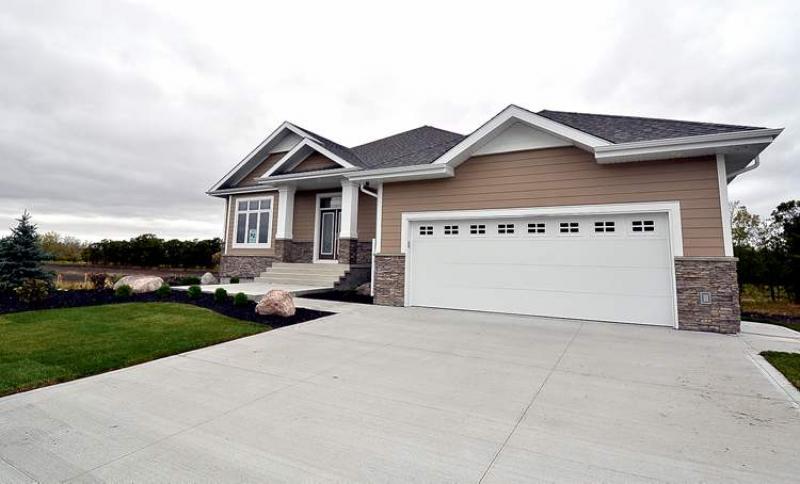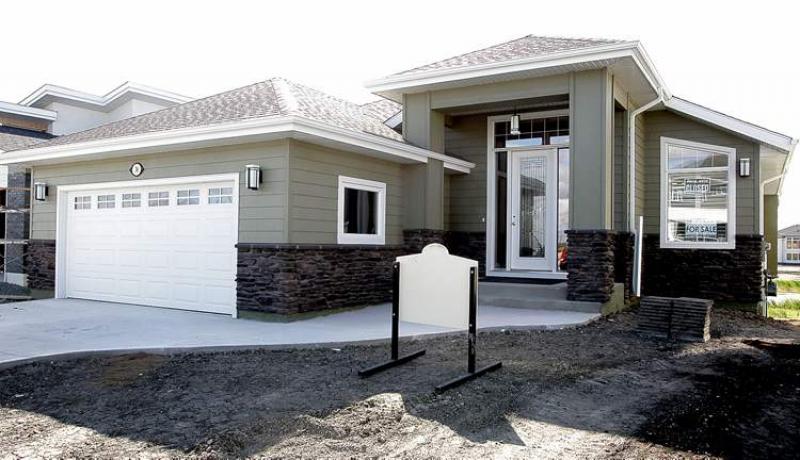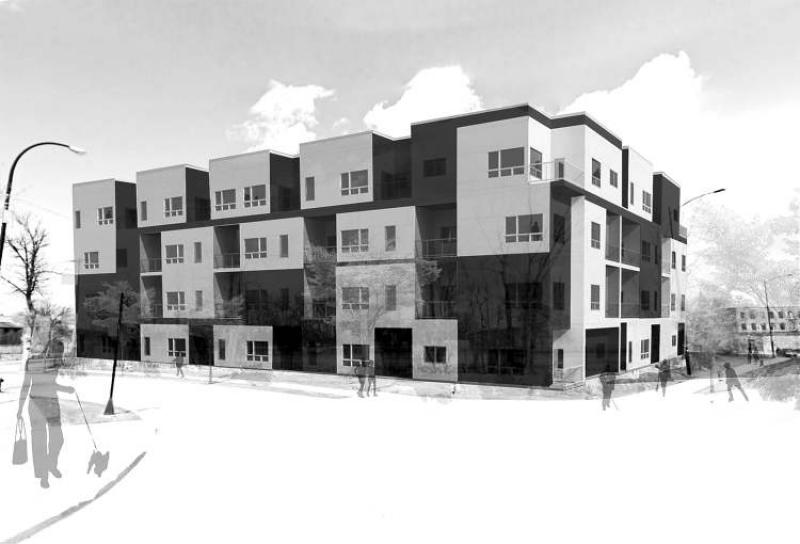New Homes
New Homes
Don't forget those slip-on shoes for Parade
The 2012 Fall Parade of Homes has started with a bang. Crowds for the first week have been terrific. The weather has been a pleasant mix of warm and cool, so you could take your pick of prime new-home visiting weather.
For the benefit of Parade veteran and rookie attendees, the Manitoba Home Builders' Association offers the following tips for a successful Parade:
Wear Comfortable Slip-on Shoes
There are 126 fantastic new homes available to visit. Although you likely won't get to all of them, you will find yourself trying to get to as many as possible.
Many of the subdivisions have multiple homes being shown and so you will probably park in one location and walk to all of the homes in that neighbourhood. Upon entering each new home, you must take off your street shoes in order to tour.
Given that some subdivisions have over 10 homes open for viewing and you don't want to miss a thing, that's a lot of bending and lacing. Therefore, be sure to a comfortable walking shoe that easily slips on and off. It will make your visit that much more enjoyable.
Map a Strategy
If you have a particular destination site, make sure you look for additional homes along the way to visit. Many of the subdivisions are in close proximity to each other and it's easy to get to a number of them in one tour.
Don't Forget the One-Offs
Although there is tremendous variety in those subdivisions that have multiple homes, make sure you visit those areas with a single listing. There are entire new neighbourhoods to discover and builders with unique designs.
That hidden gem might just be your next new home.
Talk to the Agents
The sales agents know their show homes. Ask them about anything unique features, energy savings, specific materials and what makes this particular home special. These individuals are a wealth of knowledge and will make your visit interesting and informative.
Have Fun
The Parade of Homes is an enjoyable three weeks where you can see the latest and greatest in new homes. You can go as fast or as slow as you want, taking in the big picture or concentrating on a detail.
You can visit each home as often as you want, so as not to miss a thing.
It's all about what interests you.
Enjoy the 2012 Fall Parade of Homes.
Mike Moore is president of the Manitoba Home Builders' Association.
New Homes
When market cools off it's not a bad thing
I just received a housing projection report from a very reputable housing analysis expert entitled "Most Major Markets Expected to Cool in 2013". Naturally, I was intrigued because two weeks ago, I received a highly trusted release that said "Prairie housing starts to remain elevated through 2013".
Why did these two reports differ and who was I to believe? As it turns out, both could be believed. I just needed a clarification of "Cool". Toronto is having an unbelievable boom year in 2012 with new home starts (primarily condos) up over 6,000 from the average of the previous 11 years. The forecast for 2013 is to return to the norm.
Vancouver new home starts are up 2,000 this year from 2011 and up 3,700 from the 10-year average. In 2013, the expectation is to drop to around that average or a little below. Calgary and Edmonton are experiencing start numbers in 2012 far superior to the doldrums of 2011. Projections for 2013 have both cities on par with this year or down negligibly.
Regina and Saskatoon have been through the roof the past couple of years, doubling and tripling 2009 numbers. Yes, the 2013 forecast for both cities shows a slight reduction in starts. However, down from all-time records isn't bad.
Finally, Winnipeg and Manitoba start numbers in 2012 are superior to what was projected at this time last year. In fact, they are better than what we thought even three months into this year. They are, in fact, the most starts in about 25 years. These start numbers should hold steady next year no big increase, no big decrease.
I guess when one doesn't improve at the same rate as before, it's called cooling off. If you hit a home run your first four times at bat and then hit a triple, have you cooled off or in a slump? Not likely.
Let's just take good news and good performance at face value and not look for the dark cloud.
------
The 2012 Fall Parade of Home starts September 15 and runs for three weeks.
All Parade show homes are rated and evaluated by interested volunteers like you. Your opinion on what you like and don't like and how one house compares to another in a similar price range is important.
To register as a Parade judge, please call (204) 925-2560 or e-mail info@homebuilders.mb.ca.
Mike Moore is president of the Manitoba Home Builders' Association.
New Homes
Low-income housing news also important
LAST week, the Canadian Mortgage and Housing Corporation released its forecast for the rest of 2012 and for 2013. The news was certainly promising for Manitoba as continued growth was definitely in the picture.
However, articles in the Free Press indicate this growth may continue long-term and for all the right reasons.
The original forecast for 2012 was for 6,150 starts. This was then upgraded to 6,400 and now it sits at 6,800 starts for the year. In 2011, there were 6,083 starts, the most in more than 25 years. This year has been an excellent one for the industry as demand continues to run very high. It doesn't appear to be letting up soon as CMHC calls for 6,900 starts in 2013.
What encouraged me even more were a couple of recent articles about housing -- unrelated but equally important. On Saturday, Bruce Owen wrote an excellent article on the plight of non-profits that provide low-income housing.
In particular, he spoke of the newly formed Manitoba Non-Profit Housing Association and its first workshop in November. This large collective is committed to providing more housing in the province with a target market of low-income families.
On Monday, Brent Bellamy contributed to the series of articles regarding the development of the rail yards. This is just the most recent of some excellent in-depth articles on the subject of what might be done with the Canadian Pacific Railway yards northwest of our downtown.
Of course, this project isn't going to happen overnight, nor is it going to be the panacea for all our housing needs. However, once again, people are talking about the need for new housing in Winnipeg. There is continued enthusiasm about what could be done and what should be done. Either way, it spells continued growth for our city.
Although each of these items may be unrelated, they speak of the need for more housing. If we can provide the necessary housing, people will want and be able to live here. It all contributes to making Winnipeg a more complete city.
Mike Moore is president of the Manitoba Home Builders' Association.








